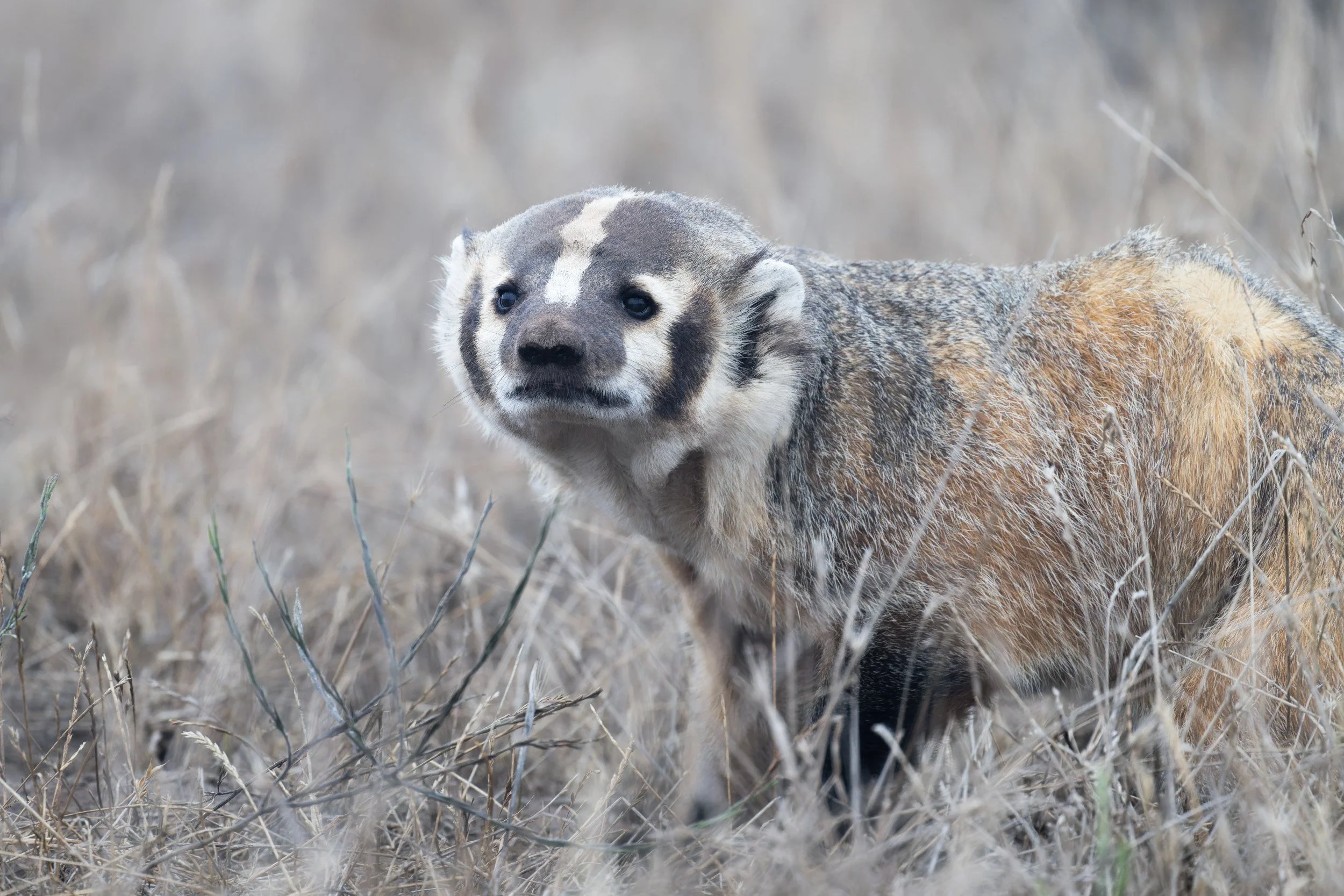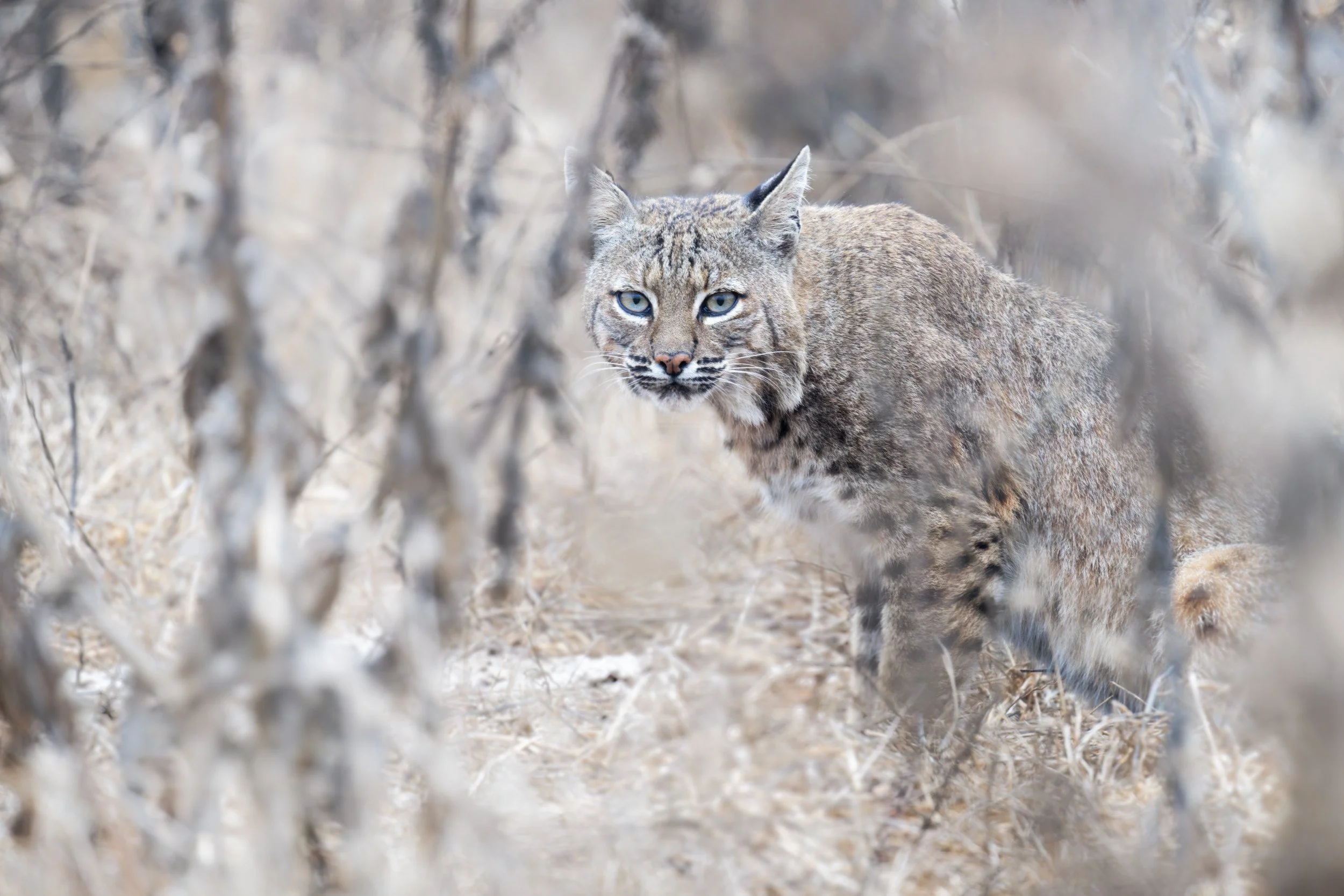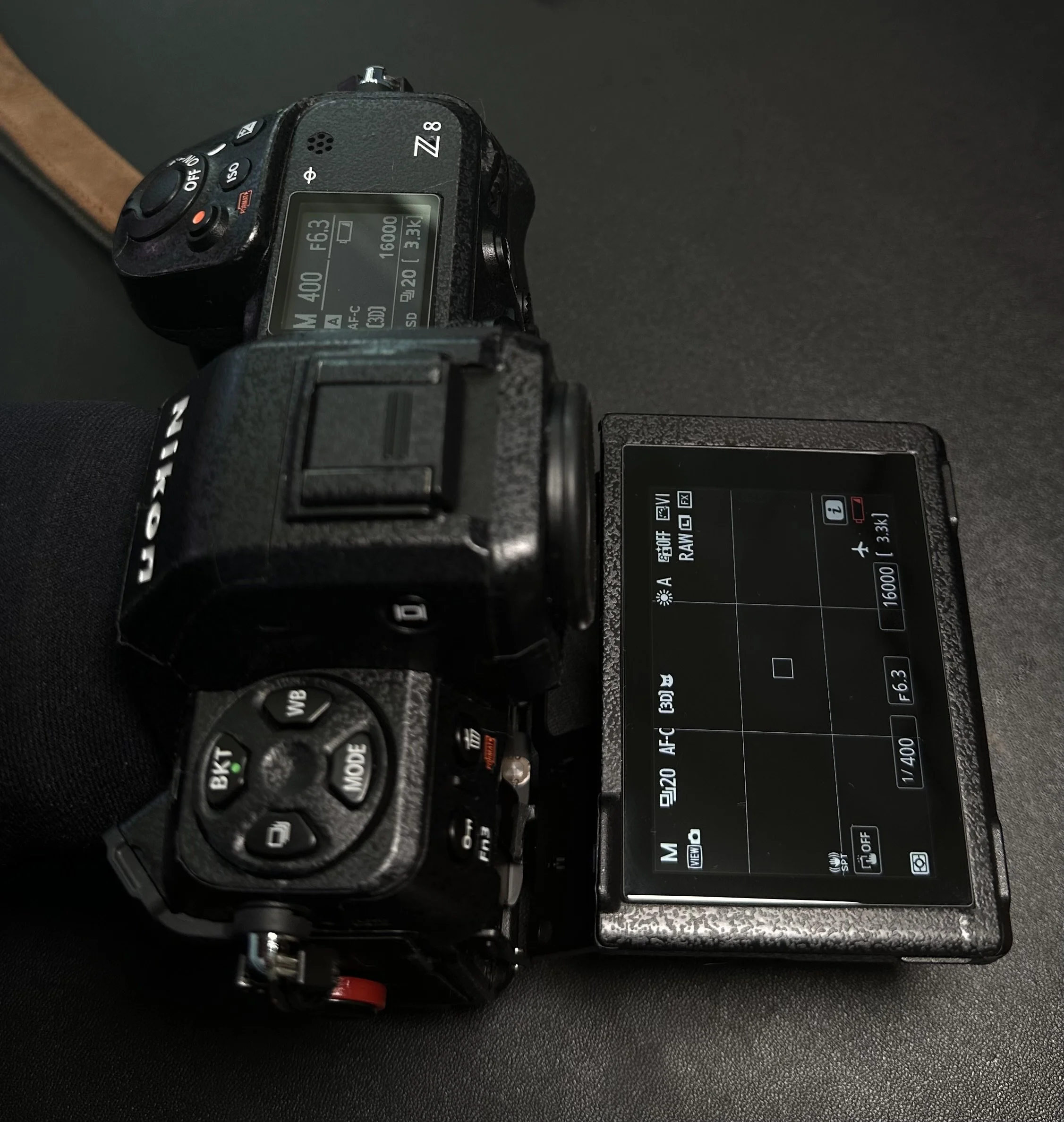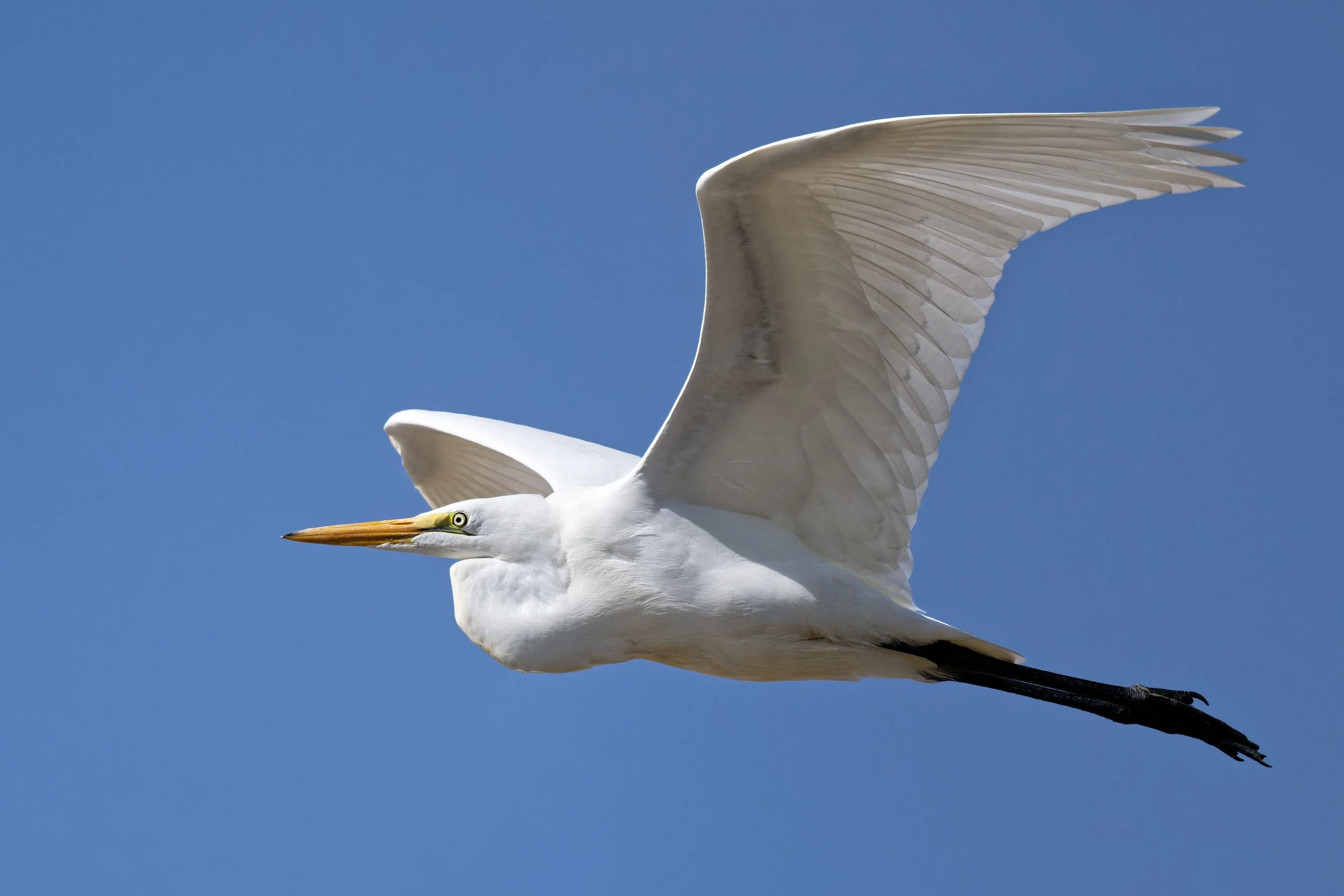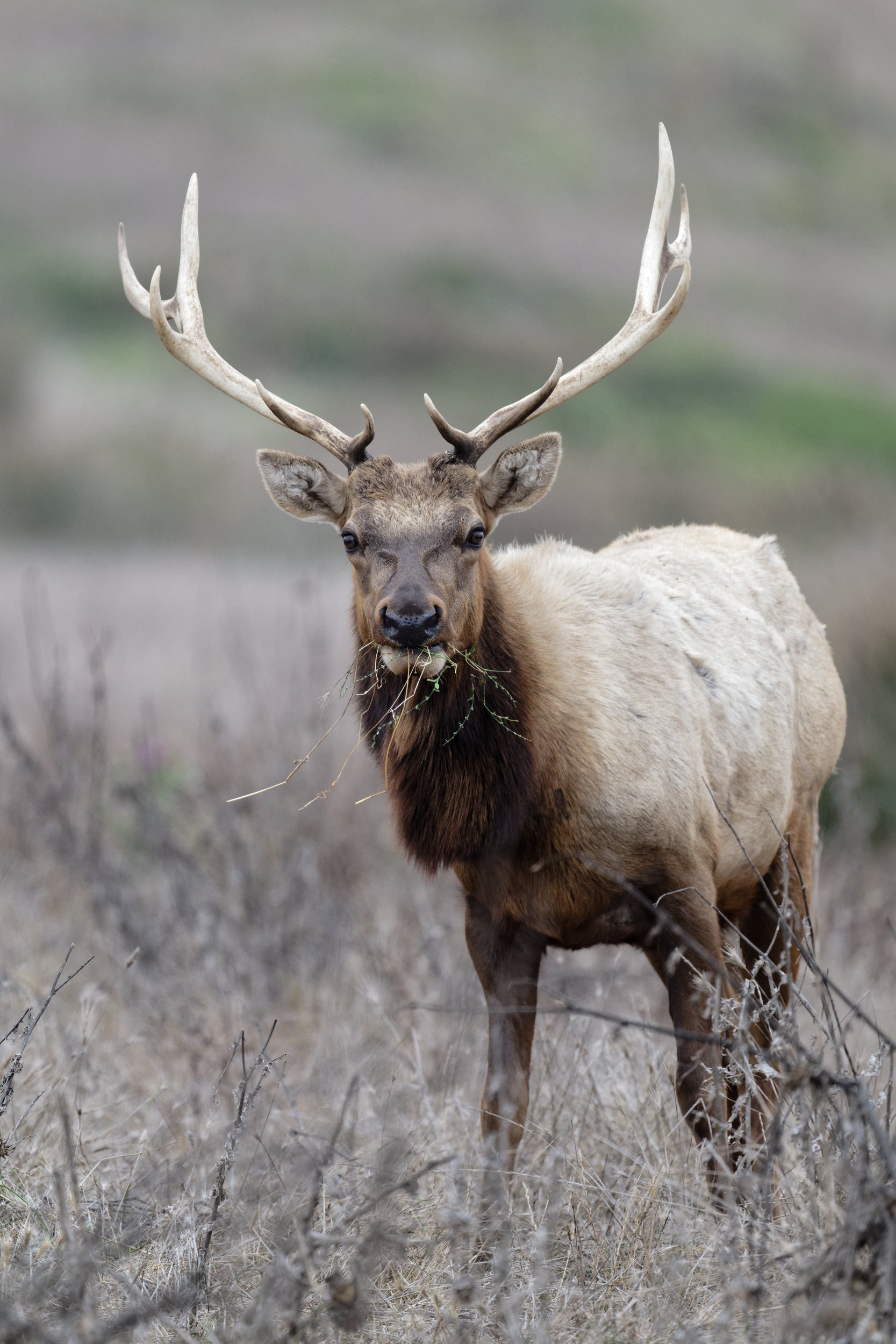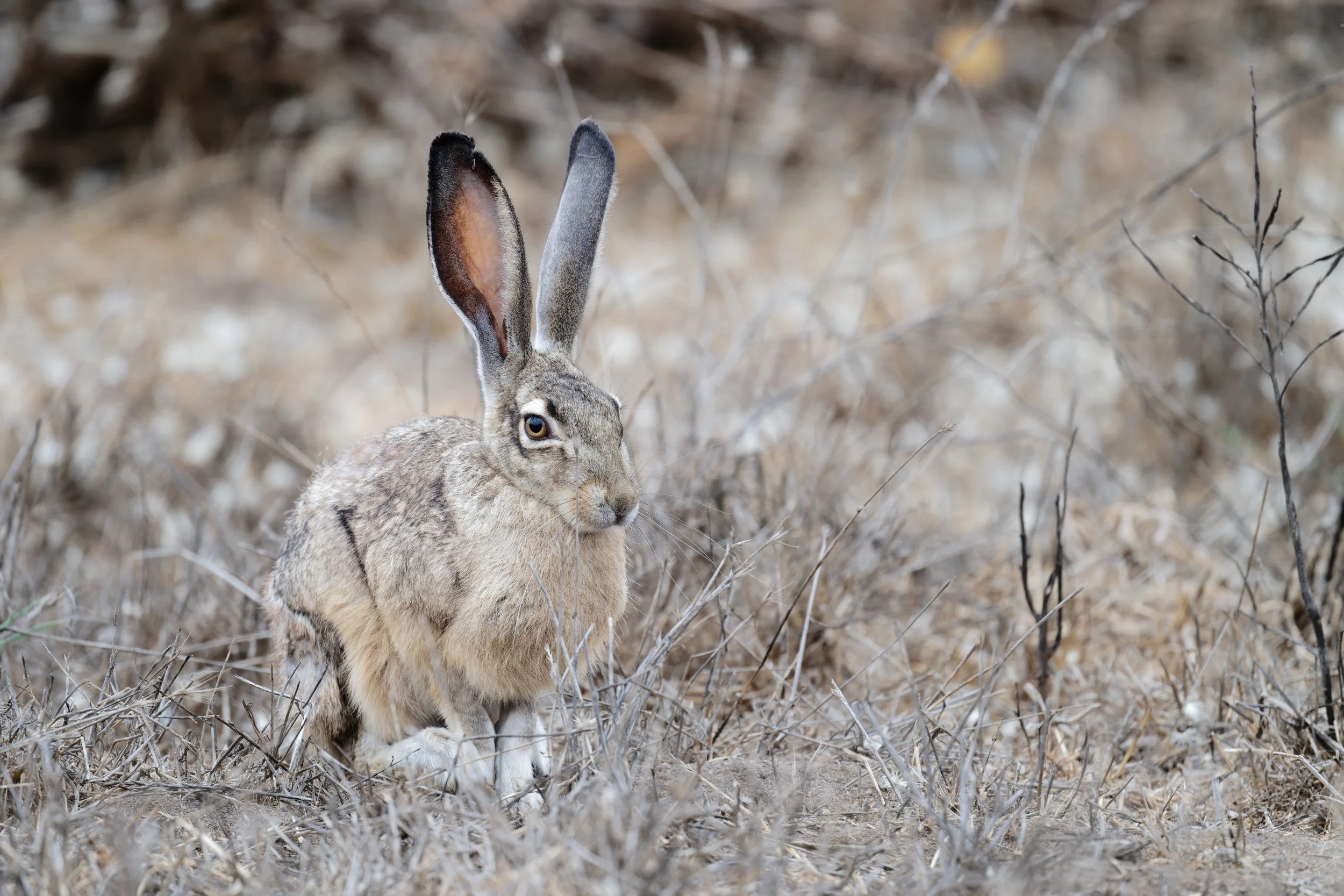Nikon Z8 with the 800 Z VR S - a Wildlife Photographer’s Review
Introduction
Anyone with experience working with wildlife subjects knows that it sometimes can take hours, days, or even months to come up with good sightings, let alone photographically appealing ones. I’ve found this especially true in temperate areas where species are less dense and often more camouflage. Seasoned naturalists and wildlife photogs know that isn’t just about being good with your camera, it’s also about putting in the time and patiently waiting, searching (and at times, wondering what the point is 😂). I think many would want to give up after combing through the same locations again and again, before eventually leaving frustrated. But I can’t tell you how many times the universe has delivered when I have decided to check on the same place “just one more time”. It’s amazing what you can miss when your not aren’t looking. Or not looking enough - and it’s never enough.
American badger. Demonstrating the Z8’s image stabilization prowess in bad light conditions (handheld) Nikkor 800Z, F/6.3 1/125th. In the past, the rule of thumb was to shoot telephoto lenses at or around the reciprocal rule (e.g., 1 over the focal length) without a tripod or monopod, so 1/800th. This is no longer the case with many mirrorless camera setups, the Z8 included.
When the moment finally presents itself, there is no guarantee it will last for long. Animals lead busy lives and are focused on survival, finding mates, avoiding being eaten, and caring for young - not posing for photos. So it pays off to have a camera that is up to the task of capturing a moment. The Z8, like the Z9 before it, is one such camera. It is built for speed, AF prowess, and high resolution - all things that help increase chances of getting a shot. If I can’t get the image with a camera like the Z8, it is definitely on me.
Another handheld slow-shutter speed snap in low-light conditions, this time, a bobcat. 800Z, F/6.3., 1/100th
I had someone mention to me that it almost feels too easy capturing images with the Z9, the Z8’s sibling. While neither the Z9 or Z8 negate the need to understand the camera well and exercise proper fieldcraft, it sure helps to have the right tool for the job. Between reliable and repeatable AF performance, to the seamless viewfinder experience and fast burst shooting, it’s a camera well-equipped for any moment that might present itself.
Western bobcat pauses briefly for a pic. These animals can be almost invisible to the untrained eye. This shot was deeply cropped (maybe 1/5th of the image). Nikkor 800Z.
There’s no doubt about it, the Z8 is an expensive camera and a serious investment, and we haven’t even started talking about the lenses. But the value proposition when compared to its competitors is strong. At the time of writing, the Z8 is the only mirrorless digital camera body that offers the combination of high megapixel stills (45.7 MP), a high speed full-frame stacked sensor, and outstanding video capture capabilities at its price point.
Note: I am using this camera and lens on temporary loan and these thoughts are my own, this review is not sponsored Nikon.
Design
On the exterior, the Z8 retains the robust feel and solid construction that Nikon is known for. Interestingly, the Z8 loses the typical magnesium sub-frame of other pro bodies like the Z9 in favor of a plastic/carbon fiber impregnated shell, which I will speculate was chosen for cost and weight savings reasons. Time will tell if this body construction can withstand the harshest abuse, but as someone who doesn’t drive nails or rock climb with my cameras, I am generally not concerned, nor do I think most people who take decent care of their gear should be.
The Z8 looks like, feels like, and works like, a smaller Z9. I appreciate that the sensor shield is retained in the Z8.
Folks that like larger camera bodies will likely be pleased with the Z8. In the hand, this camera reminds me a bit of the Panasonic S1R that I reviewed a few years ago (it’s actually even a little bit taller than that camera), which a number of people scoffed at for being too big for a mirrorless. It’s not quite far off in size from some DSLR’s like the D850.
The size is a bit of a double edge sword. The body feels a bit ungainly with the smallest of Z lenses (think, pancake prime like the 26mm F/2.8), but it actually feels right at home with larger lenses like the 800 Z, so much so that it seems like a battery grip is truly optional most of the time. I find the Z8 handles well with larger lenses, even more so than the smaller Canon R5/R6 and the Sony A7R5, which feel just a bit small when paired with bigger glass until you put a grip on them. Still, my personal size preference is to have a smaller camera like the Z7II with the ability to make it larger when needed with a battery grip, but I am guessing that compromises had to be made to mirror the performance, heat dissipation and internals of the Z9 in what amounts to a shrunken down version of that camera. Given that the Z8 is already quite large, adding the grip to this body makes it feel quite large, so if I felt I needed a grip, I would stick with the Z9, which is actually smaller than a gripped Z8.
Nikon Z8 with the 800 Z, neoprene lens cover and an optional arca-swiss foot (Note: the factory foot is not Arca-swiss compatible). These are optional things that I like to have on my cameras and lenses.
Rear LCD flip screen on the Z8 is the same design as the Z9
I am pleased that the camera retains the tilt-pivot rear LCD of the Z9. I am sure this will cause chagrin to selfie shooters (it’s hard to please everyone), but I seriously prefer this design for wildlife work over the flip screen found on many mirrorless cameras. Flip screens put the LCD off-axis with the lens, and add additional footprint on the sides of the camera that I need to worry about bumping into something. I find the tilt design of the Z8 is much more compact and intuitive to use, especially when shooting low to the ground. The only design I like better is like that on the Panasonic S1H/Sony A7RV, which articulates in both directions.
Mirrorless cameras have definitely shrunk a bit in size and weight compared to DSLRs. Just compare the 800Z to the older 800 FE F/5.6 for example, it’s a huge difference. Still, this camera with the 800Z is what I would consider just on the border of comfortable for hand holding and/or hiking. It’s a body and lens combination that takes some forethought, and I wouldn’t really want to carry much other gear while I also had this lens and body. This lens, while not versatile like a super tele zoom, makes up for it with outstanding reach and optical quality, which is extremely useful for the 9 times out of 10 that the animals are too far away.
Nikon Z8 with 800Z, F/6.3, ISO 200, 1/1600th. Credit: O. De Lancie
Operation
Like the Z9 before it, the Z8 does away completely with a mechanical shutter, and I cannot say that I miss it. On many cameras with slower readout sensors, the use of electronic/silent shutter modes comes with the penalty of rolling shutter distortion, at times making them almost unusable for things like birds in flight. It also tends to cause problems in video, making straight lines and movement look wobbly and distorted. Like its forbears, the stack sensor of the Z8 completely eliminates rolling shutter defects during video and stills.
As someone who started with DSLRs, it always irks me when stacked sensor cameras lack any indication to the user that shots are being taken (either a fake shutter sound that can be toggled or a visual cue). Call it old school, but I want to hear or at least see something when the shots are being taken. The Z8 thankfully retains both cues: the option to have a visual indicator that shots are being taken (a white flashing border on the outside of the frame) or fake shutter sounds. One of the best benefits of no mechanical shutter for wildlife work is the ability to work in complete silence, so I prefer to turn off the fake sounds and simply have the white flashing border. This help me know shots are being taken, and avoids disturbing skittish wildlife.
It’s hard not to sound repetitive reviewing the Z8 having previously reviewed the almost identical Z9, but the image making experience is similarly smooth and fluid. This is enhanced by the Z8’s dual data pipeline which allows no “skip-stutter” at the beginning of the shots which is evident with some other stack sensor cameras. On some other cameras, including fast ones with stacked sensors, when you begin pressing the shutter, you are looking at a viewfinder image that is infinitesimally in the past, and that delay can be noticeable. On the Z9 and Z8, the image you see and capture is instantaneous with the live feed. What this equates to is an organic and instant feeling camera with no “hiccup” evident in the shooting process. The best way to describe it is to imagine taking a continuous video stream, then grabbing frames from that video stream whenever desired. This has huge benefits for wildlife, where missing a moment or losing track of a moving subject due to EVF blackout is a thing of the past. The camera gets out of the way of the image making like no other.
In the speed department, the Z8 is bested by the more expensive Canon R3 and Sony A1, both which can shoot full RAW at 30 FPS, as well as by the less expensive Canon R6II (note the Canon R3 and R6II are just 24MP). The Z8 however can also do 120 FPS JPEG with AF/AE with pre-release capture (similar to OM System’s Pro Capture) Personally, I find 20 FPS RAWs more than enough for 99% of shooting, but I think I would appreciate these faster modes for some isolated and predictable scenarios, maybe a hummingbird repeatedly visiting a flower or bird leaving a branch. I still haven’t fully tested these modes, but may do that in an update.
Battery life on the Z8 is just “okay”. It lasts me about a half day of continuous use, which is not particularly impressive when compared to other cameras with more longevity, but bringing the small spare batteries isn’t such a big deal. The Z8 also has a great feature allowing the camera to be charged from a battery bank while being used simultaneously.
Autofocus
Animal eye AF is one of those features you try and then wonder how you lived without it. In the past, in the time it would take to put a tracking square on the eye when framed this tightly, this red-tailed hawk would have been long gone. Red-tailed hawk, Nikon Z8, 800Z, F/6.3, 1/800th. Credit: O. De Lancie
Much has been said in the past about Nikon’s autofocus lagging behind Sony and Canon, but with the Z8 and Z9, Nikon has made great strides to equal and exceed the tracking capabilities of their rivals. When shooting the Z8 side-by-side with other cameras, I have found that with default settings it can sometimes take slightly longer to detect certain subjects in stills mode, but once the subject is detected, the tracking to the eye is quite sticky. It also does not seem to drift away from the eye quite as much as some other cameras. Overall, I think that the Z8 (and Z9) have excellent autofocus, as long at it is set up correctly and intuitively to the user. Whereas Canon and Sony’s autofocus seem to work intuitively for most users out-of-the box, Nikon users will find that a little fine-tuning in the settings will be required before getting optimal results for their shooting situation.
A big bird against a sky background is not generally a challenging subject for a camera, but the fact that it so effortlessly nails the eye focus was noticeable, even during flight and with a bird with such a wide wingspan is impressive. Nikon Z8, 800Z, F/6.3, 1/3200th
Another thing I find impressive about the Z8’s AF performance is that it is reliably consistent. On many cameras, my strategy will be to take many frames and choose only the best and most tack sharp. With the Z8, I find I am more often than not throwing away a ton of identical sharp images because of high AF precision. This is not a given, and with some other cameras I’ve tested the AF drifts for no apparent reason.
It’s also quite a feat your camera finds the subject before you do, and on more than one occasion, I’ve witnessed just that - the Z8 will pick up the eye of a badger, coyote, hare, etc., even before I find it in the viewfinder. Animal eye-AF is that good.
Tule elk, Nikon Z8, 800Z, F/6.3, 1/400th, ISO 400; Credit: O. De Lancie
What I have found works best for me when shooting animals is to keep single-point tied to the shutter. I will prefocus on my subjects using single point, essentially taking out most of the guesswork for the camera to know where in the frame the subject is located. I have 3-D Tracking with animal eye detect assigned to the AF-ON button, so I can push that button at any time to start tracking, and usually it locks on to the eye immediately. In the event that the eye tracking is not working very well (this occurs occasionally with certain animals or when there is a lot of grass/bushes in front of the subject), I can revert to using the shutter with single-point AF again. Depending on the subject, I may also utilize animal tracking but limit the AF to zone instead of point. That way, the camera only attempts to focus on subjects within the zone, but at the same time, it negates the need to pinpoint the AF square on a subject which can be challenging for things like birds in flight.
For BIF, the Z8 does exceptionally well. It can be challenging to acquire initial focus if your starting point is way off, something that many cameras appear to struggle with, but once registered, the AF has no problem keeping a lock not the subject, even amongst a cluttered background or foreground. It is highly beneficial to pre-focus on something in the same focus plane as the flying bird, if possible.
Red-tail hawks having a mid-air dispute. Nikon Z8, 800Z, 1/1600th, F/9, ISO 1000
For the review, I mainly reviewed the Z8 with the 800Z. One could argue that I had the “wrong lens” for BIF using the 800Z. But what I observed is that a lot of the beliefs around ISO performance and AF at higher apertures weren’t as relevant with this combination. This camera and lens combination is still more than adequate to capture fast action. That said, it can be tough always working with an 800 prime and not a zoom. It’s a toss-up between having maximum reach and the versatility of a zoom.
I do not have much video experience, but I actually have found that the Z8 tends to have some of the fastest and stickiest autofocus in video modes. Eyes are tracked very well using the AF-F tracking mode.
Stabilization
One welcome feature of the Z8 is just how well the camera handles image stabilization. It used to be that full-frame cameras lagged drastically behind other mirrorless crop cameras in stabilization. That is not the case anymore. There are multiple photos throughout this post which were taken at shutter speeds that seem crazy to do handheld with an 800mm lens. The combination of excellent stabilization and high frame rate really helps, as it facilitates taking a large number of photos at slow shutter speeds and then picking the sharpest one. This excellent stabilization opens up more shooting possibilities, as it enables me to continue taking photos of wildlife even when the sun is nearly gone, even without a wide aperture lens. It also helps keep ISO values fairly low, which can reduce the need for post-processing.
The following video provides snippets of 4K120 handheld footage with the Z8/800Z combination. While I’m pleased with the results, especially at such a long focal length, I must admit it would have been better with a tripod. Excuses aside, my initial reactions are that this is a great camera for wildlife video, even though my video skills are not.
Image quality
Another great thing about the Z8 is that it is a speedy camera but it also takes detail-rich photos with great neutral color and high dynamic range. This is sort of the holy grail for wildlife photography because its desirable to have both speed to capture unpredictable moments, but also the ability to crop images when animals are inevitably too far away.
Overall, I find the Z8’s image quality outstanding, with great color and contrast, especially with the S lenses, and I also appreciate the ability to crop in when needed without major penalty.
Porcelain crab. Nikon Z8, 800Z, F/6.3, 1/1600th, ISO 100, Credit: O. De Lancie
Conclusion
Cameras like the A7RV best the Z8 in sensor resolution and the R3/A1 best it in raw speed. So on paper, it’s not the best at anything. However, in reality, the Z8 strikes an impressive balance of specifications for less money, and provides its users with native access to Nikon’s superb line of new Z wildlife-ready lenses.
The camera stacks up well compared to the competition and it’s hard to deny the value. I think that it would be tough to argue that the benefit of more megapixels would outweigh rolling shutter effects the A7RV suffers from in video and action stills, and similarly, I’d rather have the Z8’s 45 megapixels than the R3’s 30 frames per second RAW burst mode. 20 FPS RAW stills is still an extremely fast rate, and shooting faster than that seems more like a “nice to have” than a need. There are rare circumstances I can think of where maximizing the number of frames for a given instant is desirable, maybe flapping of hummingbird wings, or the precise moment an eagle touches the water. But more often than not, 20 frames per second is going to be an incredibly large number of frames to cull and completely overkill for a majority of subjects.
The Canon R5 is another solid option in this price bracket, but it lacks a stacked sensor which I think is a boon for wildlife and action photography. The Z8 is simply a better all-rounder than those cameras, in my opinion, at time of writing. I doubt that will remain true for long, but it is the case today.
Shots like these which were a challenge in the past almost seem too easy now. The camera easily picks up and focuses on the animal’s eye instantly. In the past, by the time I would have positioned the AF point on the eye the animal, it would be long gone. Nikon Z8, 800Z, F/8, 1/800th, ISO 400
Some may think that having a camera like the Z8 means it does all the work for you and it feels like cheating. It’s true that some of the skills that were needed to operate a camera in the past to are no longer that relevant, like putting a tracking square on a subject’s eye and carefully predicting where that eye will be. But unfortunately, the Z8 is not going to negate the need to seek out good light, choose compelling compositions, and make the most out of the camera’s performance on offer. Great autofocus, resolution and speed just means I’m freed up to pay more attention to other important things like framing, light, and composition. For example, in the deer image above, I raised the camera far over my head and let the camera guess on the autofocus, something I would never have been able to do with a camera 10 years ago. So, it’s not that the camera negates the need for skill, it just means we now have more creative latitude in getting the shot and need to build up other skills because the bar has been raised.
The selection of settings, including AF modes, shutter, aperture, ISO, still have to be deliberate and intentional to yield good results. Maybe some day we will have cameras that choose the best combination of settings in real time based on the type of subject detected (i.e., a flying bird vs. a stationary one).
Black-tailed jack-rabbit, handheld, Z8, 800Z, F/6.3, 1/250th
Irrespective of the Z8, one of the best things about the Nikon system currently is that it opens up access to a great lens lineup for wildlife enthusiasts covering a range of budgets - the 800, the 400 F/4.5, 100-400, 180-600, 400 F/2.8 TC, and 600 F/4 TC. Add in FTZ adapter and the outstanding 180-400 fixed aperture professional zoom or any other F-mount lenses are an option. Nikon is definitely paying attention to the wildlife niche, unlike some others…
If wildlife is the focus, and its within budget, the Z8 or Z9 are the cameras to choose within the Nikon lineup. While the Z6’s and Z7’s were good cameras, they were never dialed in the way the Z8 and Z9 are for wildlife applications, and if you ever have the chance to use them side-by-side, you will understand why. There is no contest.
I would buy this over the Z9 if I prioritized having the smaller and lighter body. It’s probably the better choice for a variety of smaller Nikon Z lenses. The Z9 also has slightly better build construction and the Z8 loses the drive dial. But other than that, there is isn’t much else between them for this application, and it ultimately boils down to what size camera do you want. For most, I think the Z8 is plenty big enough and wouldn’t want to go with the bigger Z9.
In many ways, the Z8 feels future proof in that it performs so well in so many key areas and basically gives you all the greatness of the Z9 in a smaller package. Sure, there are going to be higher megapixel, faster burst shooting cameras, and who knows what other technologies may be in development, but I have a hunch all of those spec bumps will feel like incrimental improvements as opposed to major leaps forward like the Z8 and Z9 achieve. Just like the D850 and others did before it, the Z8 feels like it has staying power.
Night heron. Nikon Z8, 800Z, 1/1600th, F/6.3, ISO 400

